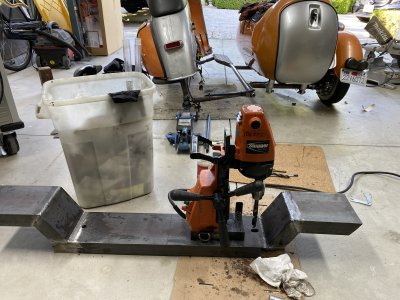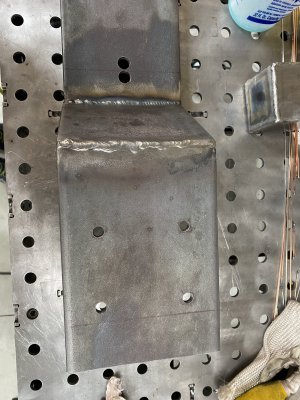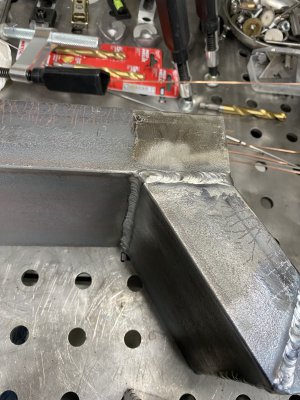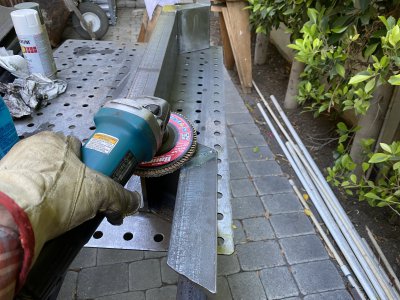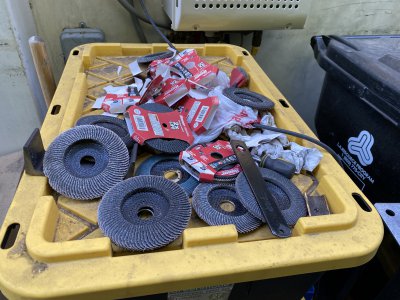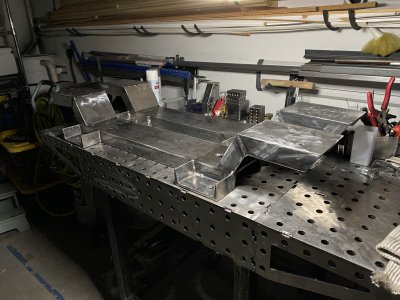- Joined
- Sep 28, 2013
- Messages
- 4,319
best way I've found of drilling a hole on location with a hand drill (no drill press?) is a deep prick punch, then a short thin drill (eg. 1/16") and then your on size drill. The big drill will follow the small hole quite nicely. If you need a slot, drill 2 holes so they just or not quite overlap then use a carbide burr or a file to make the straight sides.
For your stand, I'd suggest a bit of bracing in those side wings. I never cease to be amazed by how much metal can move, plus I'm a belt and braces (suspenders for you lot) kind of guy
For your stand, I'd suggest a bit of bracing in those side wings. I never cease to be amazed by how much metal can move, plus I'm a belt and braces (suspenders for you lot) kind of guy


